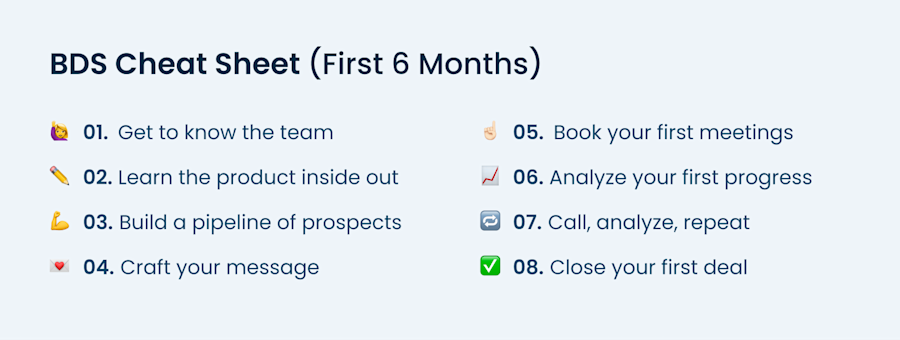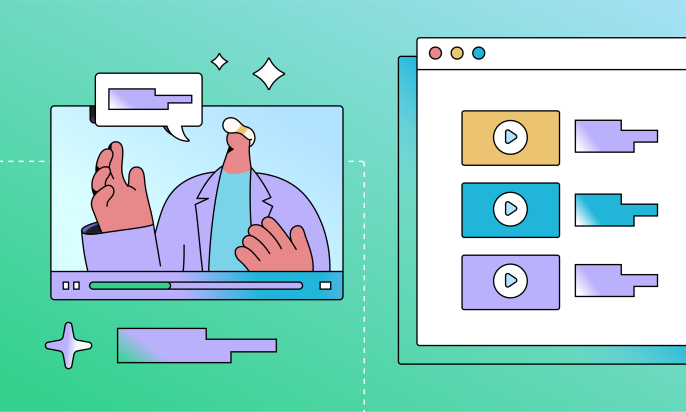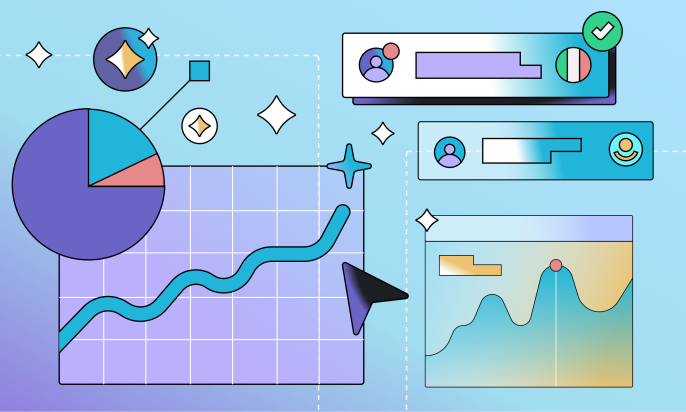So you’ve landed a job as a Business Development Specialist at a SaaS company. Let’s go!!
That being said, you’ve got a lot of hard work ahead including a steep learning curve.
It’s hardly a shocker — anytime you start a new job, the pressure is on. Getting along with the team, grasping the ins and outs of the offering, closing your first sales, and proving you are an asset to this company — all part of the gig.
It’s a handful even outside the competitive SaaS environment, honestly.
But if you're reading this, you’re up to the challenge. Take the right steps with the right mindset, and these first six months will set you up for success.
Here’s a step-by-step breakdown to help new BDS hires get the most out of their adaptation period.
But first, let’s get some basics straight. 💪
What is a Business Development Specialist?
A Business Development Specialist (BDS) pulls the business’s outbound sales ahead. Often a bridge between sales and marketing (but mainly on the sales side), business development specialists explore new ways to grow business and rake in revenues.
What does it mean exactly? If you skim through open BDS positions on Linkedin or Indeed, you’ll notice that the BDS role can look different depending on the company or sector. That’s why many BDSs are jacks of all trades that operate on both strategic and tactical levels.
This especially rings true for small to medium-sized SaaS companies. Today, you need to identify new lines of business, tomorrow you sweat on your cold pitch, and on Friday, you have three business partner meetings lined up — this is a true story for a BDS.
What does a business development specialist do? Give or take, BD specialists’ responsibilities boil down to the following:
Analyze the market
Research competitors
Nurture cold prospects
Conduct outbound sales activities
Manage sales teams and processes
Establish new partnerships and oversee current ones
Maintain relationships with existing customers
Explore new markets and revenue streams
Lots of similarities with sales or business rep positions, right? They indeed do look alike, often being used interchangeably.
And yet, they aren’t the same thing. While all three work together, talk to leads, and close deals, there are a few critical distinctions. Let’s see what they are.
What’s the difference between BDS, SDR, BDR
In SaaS, more than anywhere, the line between these sales titles is blurred. The responsibilities and KPIs of a business development specialist, a sales development representative, and a business development representative can overlap or change depending on the needs of a specific business or industry.
That said, while all three can be called the breadwinners of the business, each does this differently. Let’s pin down the key differences between them based on my experience.
BDS (business development specialist)
The scope of a business development specialist is broader then that of an SDR and a BDR.
A big chunk of BDS’ job involves finding new markets and revenue streams that help push the business forward. In practice, it means BD specialists not only pitch the product to potential clients but also potential strategic partners.
Maintaining an existing account base and increasing revenues and profitability with the accounts is a big part, too. As such, key business development specialist skills include:
Sales, sales, sales
Excellent communication and negotiation skills
Project management
Analysis and research, etc.
SDR (sales development representative)
The work of a sales development representative centers around inbound lead prospecting. Inbound leads are “warmer” prospects that have interacted with your website or shown interest in your product before. Sales reps identify, qualify, and move those leads down the sales funnel to eventually close the deal.
While SDRs must endure cold-calling like the rest of the crew, they usually pitch to those already familiar with the offering.
BDR (business development representative)
The nature of the BDR’s work is the same as that of an SDR, but with one distinction: they go after outbound leads.
A business development representative is your typical cold outreach person who goes out in the wild to create lists of new markets or market segments potentially interested in the offering. The BDR then sifts through the leads on this list, crafts the pitch, emails prospects, and schedules calls. The process is actually more nuanced, but you get the point.
That’s a high-level overview, as most SaaS companies like to define the roles individually depending on their size and resources.
With this out of the way, let’s jump into your next steps in the role. Read carefully, as these will shape your future success as a BDS.
First 6 months of BDS at a SaaS company: A step-by-step guide
The key to any smooth and effective workflow is having a clearly established process. The same goes for onboarding. My advice is to be strategic and proactive to integrate faster. Here’s how you can get off on the right foot.

Step 1. Get to know the team
As a BDS, you’ll likely end up in a team consisting of BDRs, SDRs, and the head of business development. In a hectic B2B SaaS environment, though, you never know.
What is everyone responsible for? What tools and techniques do they use? What’s their lead gen process? How do you fit into this process, and can you improve it?
Most importantly, do you find the same memes funny? 🙂
Jokes aside, connecting with your team on professional and personal levels will make your work 10x more productive and fun.
Here are a few pieces of advice that work but often get overlooked:
Attend every meeting, speak up, and ask questions. Be present, be vocal, and be visible. Observe.
Ask for help and offer yours where appropriate. The same goes for feedback.
Don’t force friendships. Sometimes, the chemistry just isn’t there. In that case, be professional and focus on common business goals.
Don’t treat your colleagues like a competition. Instead, cultivate an environment where everyone can learn from each other, close kick-ass deals, and have some fun in the process.
Step 2. Learn the product inside out
There’s no better way to learn something than by doing. Start off as a user, not a salesperson. Put yourself in the shoes of your ideal customer persona, get access to the demo account, and become one with the software.
Use every feature there is, turning to the knowledge base or developers if you have questions along the way. This will help you understand the product and its value firsthand. This approach is effective, fun, and allows the information to stick.
Needless to say, you have to know things like pricing plans, terms of licensing, and FAQs like the back of your hand.
Next, test your knowledge with fake demos for your teammates. Then, address the objections and plan for the worst-case scenarios.
Step 3. Build a pipeline of prospects
How you will do that depends on whether your company has an established list-building process or not. 80 percent of companies rely on sales prospecting software to build prospect lists, so chances are it’s the same for your business.
If that’s not the case, consider yourself a trailblazer and set up a new effective sales prospecting process. There are many prospecting tools on the market — pick the one that’s tailored to your business needs and pitch it to the stakeholders. Or build your list manually.
Step 4. Craft your message
The success of your campaign depends on two things: the right audience and the right message (ideally, at the right time). Once you understand the two, everything else falls into place.
You see, there is a big difference between targeting inbound and outbound prospects. In the first case, they already know what they want and who you are. With the latter, it’s different — they don’t know about your offering and how it will benefit them. That is why you need to craft your message accordingly.
Give it a good thought before booking your first calls. But don’t overthink it either — after all, practice is the best teacher.
Step 5. Book your first meetings
Thrilling as it is, try not to lose your head and approach your first call with a prospect pragmatically. Don’t expect too much of yourself; your first call won’t be your best one, nor should it. The important thing is that you learn from it.
Here are a few tips for your first call, learned the hard way:
Check the product for obvious bugs before the call
Ask questions to understand the prospect’s circumstances
Don’t jump into answering their questions before you really understand the use case
Don’t overcomplicate/over explain the tech
Focus on solving their problem
Set a positive tone
Don’t be too hard on yourself; practice makes perfect.
Step 6. Analyze your first progress
Take time to review your first calls and messages with prospects and see how you can improve your craft. Better if you follow the example of pro athletes and video or audio record yourself while presenting. This way, the camera will capture everything your memory won’t.
Did your pitch have a clear story? Did you ask enough questions? Was your pace on point? Did you overwhelm the prospect with details? Were you too robotic, salesy, or informal?
Take stock of your first calls, and continue perfecting your pitch. Sales is always evolving and changing as an industry, so your process will as well.
Step 7. Call, analyze, repeat 🔁
Every call you make is a way to improve your craft when you're starting off. The learning curve can be steep, so don’t get discouraged just yet.
Folks without much experience in B2B sales tend to start getting frustrated too soon if they don’t see the results. The key here is to persevere and strike the right balance between thinking and doing.
Listen to experts, ask for feedback from your team members, book more calls, reflect on your progress, and double-check your strategy. Then repeat.
This way, you’ll hit your big break sooner.
Step 8. Close your first deal
Have you ever climbed to the top of mount Everest? Me neither, but I’m pretty sure winning over your first client feels somewhat similar.
So give yourself a well-deserved pat on the back and take your time to be excited.
To repeat this success and make it a part of your routine, however, enjoying the triumph is not enough — you must also reflect on what made it happen.
What was unique about this time? What did you do differently? Was it an overall improvement in your delivery or specific changes to your presentation and sales strategy?
Be thorough and take notes. But don’t try to break it down into atoms — after all, sometimes, things just click.
Tips to make your first 6 months as a BDS fun and effective
Now that you know your next steps, let me give you some bits of practical wisdom before you embark on your BDS journey. Keep them in mind to make your adaptation less painful and more fun.
Learn from your mistakes
In your first months on the job, you’ll make countless mistakes, big and small. Yes, not all failed deals will be your fault (far from it), but a good chunk of them will. So do everything to detect them and get to the bottom of what you did wrong.
Taking your ego out of the equation helps big time. The sooner you do this, the faster you’ll start seeing the results.
Why did this call turn out to be awkward? Did you ask the right questions? Was the company a good fit for you?
Use every “no” to sharpen your business development specialist skills.
Don’t try to predict the outcome of a sales deal
When you start seeing patterns in the sales cycle, you might be tempted to use them to predict the outcome of your calls. Our brain loves systems and predictability; they give us a sense of control. But don’t let this cloud your judgment and lead to disappointments.
There will be companies that look like a perfect fit on paper but won’t buy from you. And there will be companies you expect nothing from who will become your best clients.
You might’ve done everything perfectly both times, but the decision-makers in the first company didn’t approve the purchase. Or maybe, the timing was off.
So don't try to predict how it will pan out. Just do your best and move on.
When you close the laptop, forget about work
I know taking your mind off work is difficult when you work in SaaS sales. But you can’t let those funnels, messages, and calls run through your head non-stop. There’s no merit or use in this, only eventual burnout.
Do yourself a favor and forget about work when it’s not in front of you. Catch those thoughts when they re-emerge, write down ideas and promise yourself to get back to them when you’re at work. Not only will this keep you sane, but it will also make you more efficient during work hours.
Grant yourself time to recharge. Close your laptop and go on a walk, work out, chill with friends. Your work will be there when you come back.
Accept that the first six months as a BDS will be tough
If it’s your first time at a SaaS company or as a business development specialist in general, prepare yourself for a bumpy start. Business development is a very demanding field that involves a lot of interaction with other people, which can be very resource-intensive.
Add to this the need to learn the nitty-gritty of a technically-nuanced product, understand theICP, and of course, get along with the rest of the crew. I know it can be a lot to take in, especially if you’re new to the craft.
But it gets easier. In a few months, you’ll know everything there is to know about the offering, set up an effective process, find your voice and discover the techniques that work best for you.
In the meantime, just hammer away.
You’re up to the challenge!
Yes, your first months as a new BDS will be hard. But if you play your cards right, this time will be the start of a thriving career filled with achievements, stimulating tasks, and personal and professional growth. You’ll meet hundreds of people, grow your network tenfold, learn from the best industry minds, and acquire invaluable SaaS sales and marketing skills.
Just be proactive and friendly, take a genuine interest in the company’s product, analyze your wins and losses, and have your prospect’s best interests in mind. The rest will come!
Now that you're here
Leadfeeder is a tool that shows you companies that visit your website. Leadfeeder generates new leads, offers insight on your customers and can help you increase your marketing ROI.
If you liked this blog post, you'll probably love Leadfeeder, too.
Sign up







